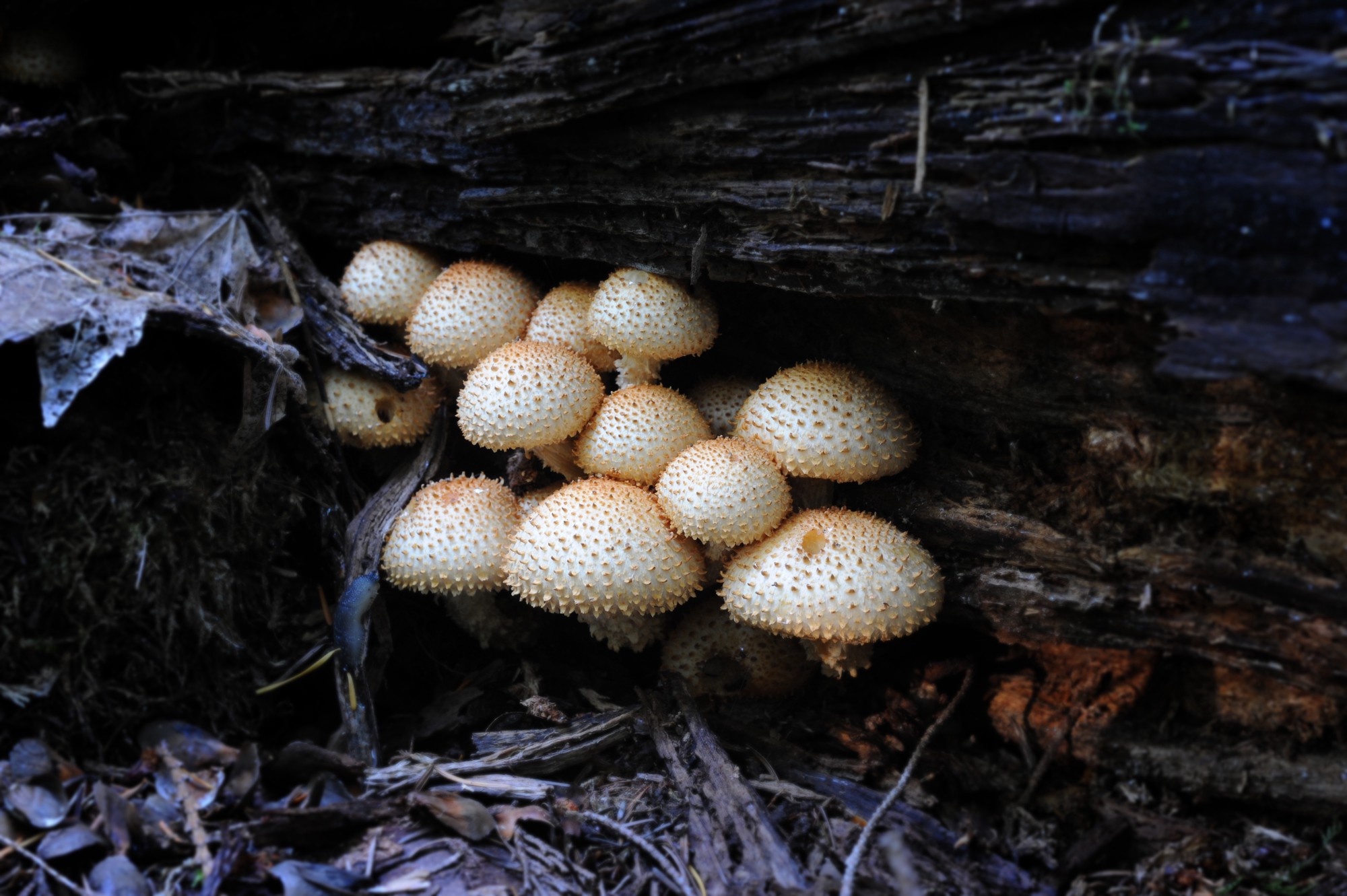

During a stroll through the forest one afternoon, Eben Bayer, a student at Rensselaer Polytechnic Institute in upstate New York, noticed something peculiar. Fungus had taken hold of a pile of rotting wood chips, binding that woodsy detritus together like a marshmallow to Rice Krispies. At the time, Bayer–in need of a project for his inventor’s studio course–had innovation on the mind. Might it be possible, he wondered, to harness a natural adhesive for an industrial setting?
Bayer shared the idea with fellow student Gavin McIntyre, who also saw the mushroom’s magic potential. “We got excited, ordered some grow-it-yourself mushroom kits, and started growing mushroom in our apartment kitchens,” McIntyre said. Through trial and error, the pair figured out a way to produce rigid, molded blocks built from fungus and organic waste. While those materials were far from perfect–and some of their fellow students thought the idea was crazy–they saw enough promise to take a chance on the idea.
In 2007, Bayer and McIntyre founded Ecovative, a company dedicated to mass-producing the mushroom-packaging material. The material is made from mycelium, or the branch-like vegetable part of fungi. With some refining, the duo developed an easy formula for its production. First, they mix organic waste with mycelium, and then insert that putty-like material into a plastic mold. For several days, the mycelium’s greedy roots meander their way through the mix, sealing it together. Finally, they cook the now-firm block, killing the fungi.
From a sustainability point of view, price-competitive Mushroom Packaging outperforms many expanded polystyrenes on several fronts. For starters, it requires as little as one-fifth to one-eighth the energy it takes to produce conventional packaging foams. It’s also made from pasteurized farm waste, such as corn stalks and seed husks, that otherwise would wind up in a landfill. Most significantly–unlike plastic that can persist as pollution for hundreds to thousands of years–it’s 100 percent biodegradable, so it can be thrown into a compost bin or, should it find its way back into the environment, will eventually break down. Additionally, the packaging doesn’t smell or attract pests, and it’s actually edible (though it reportedly does not taste very good).
Today, Ecovative makes packaging for protecting small glass bottles produced by Stanhope Seta Ltd., cushioning electronics made by Dell and cradling furniture shipped out from Crate & Barrel, among others. “If you told me the level of high performance we would be able to achieve when we first started producing and shipping Mushroom Packaging, I would have had a hard time believing you,” said Sam Harrington, Ecovative’s director of sustainability.
In addition to packaging materials, the company also recently launched two new products, Myco Board–an alternative to engineered woods, which traditionally use carcinogenic urea-formaldehyde as a bonding agent–and a Grow It Yourself kit, suitable for those who want to make their own packaging, or others looking for an interesting DIY project or even a new artistic medium. Architect David Benjamin, for example, recently grew 10,000 brick-shaped mushroom blocks, which he used to build a 40-foot tower currently installed at MoMA PS1 in New York City.
Artistic pursuits aside, there are some packaging needs that Ecovative cannot meet. Mushroom Packaging will probably never be right for the loose-fill packaging arena (think foam peanuts), and it will most likely never be able to compete with the unbelievably cheap prices of very high volume, low density Styrofoam. Ecovative also hasn’t attained certification for direct contact with food, which rules out developing replacements for Styrofoam cups and clamshells–at least for the time being.
Others companies, however, are filling some of those needs with biodegradable packaging peanuts, recyclable clamshells, and sustainable party supplies. The ultimate aim of Ecovative and others’ endeavors to make packaging more sustainable, of course, is to reduce the incredible amount of waste that winds up in oceans, waterways, and on land. “We see this as a materials revolution,” Harrington said. “Future generations won’t have to live in a world surrounded by waste that will persist for many, many lifetimes.”


How We Get To Next was a magazine that explored the future of science, technology, and culture from 2014 to 2019. This article is part of our The Future of Food section, which covers new innovations changing everything from farming to cooking. Click the logo to read more.
